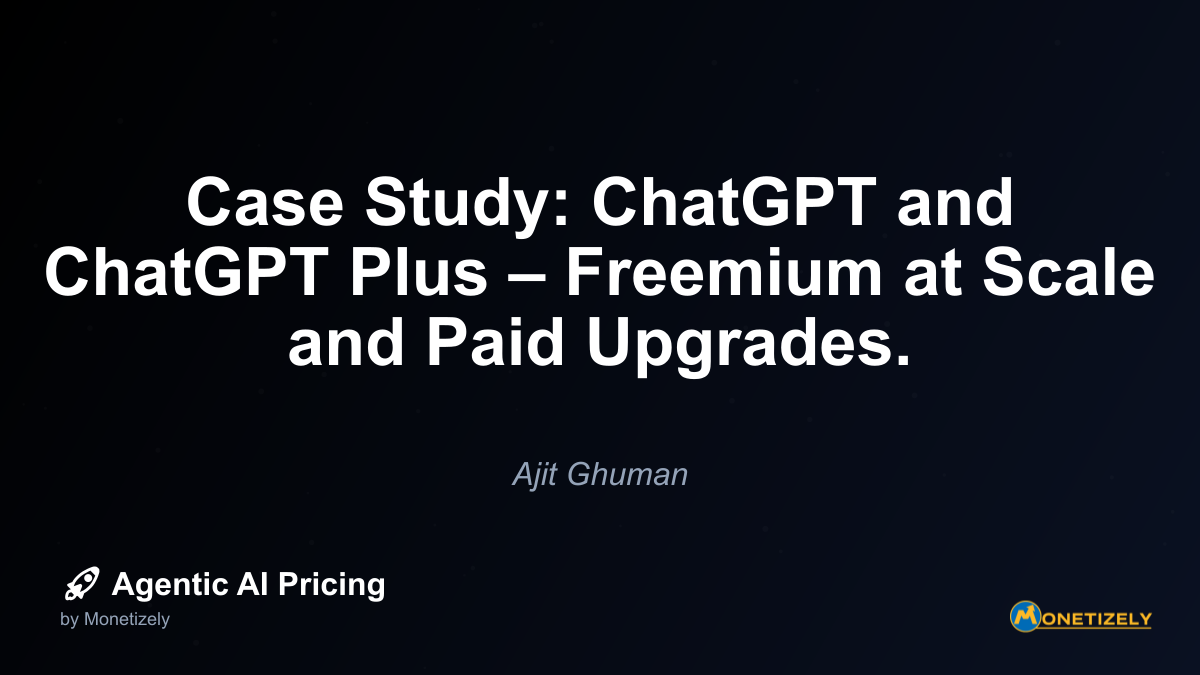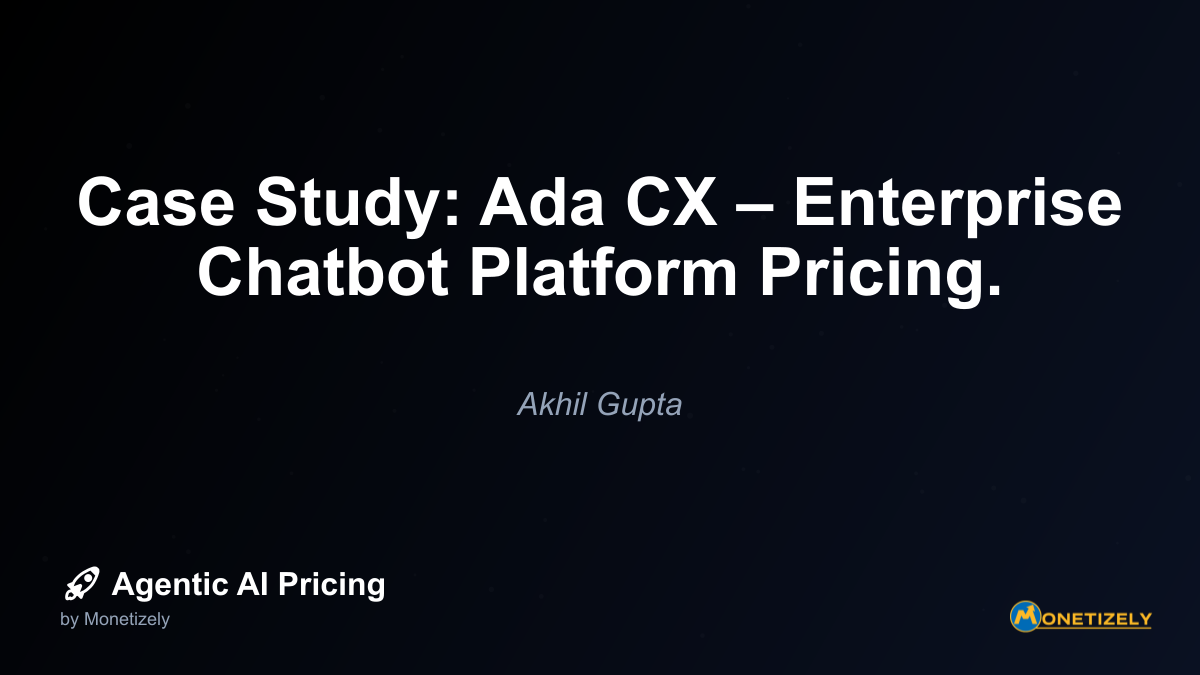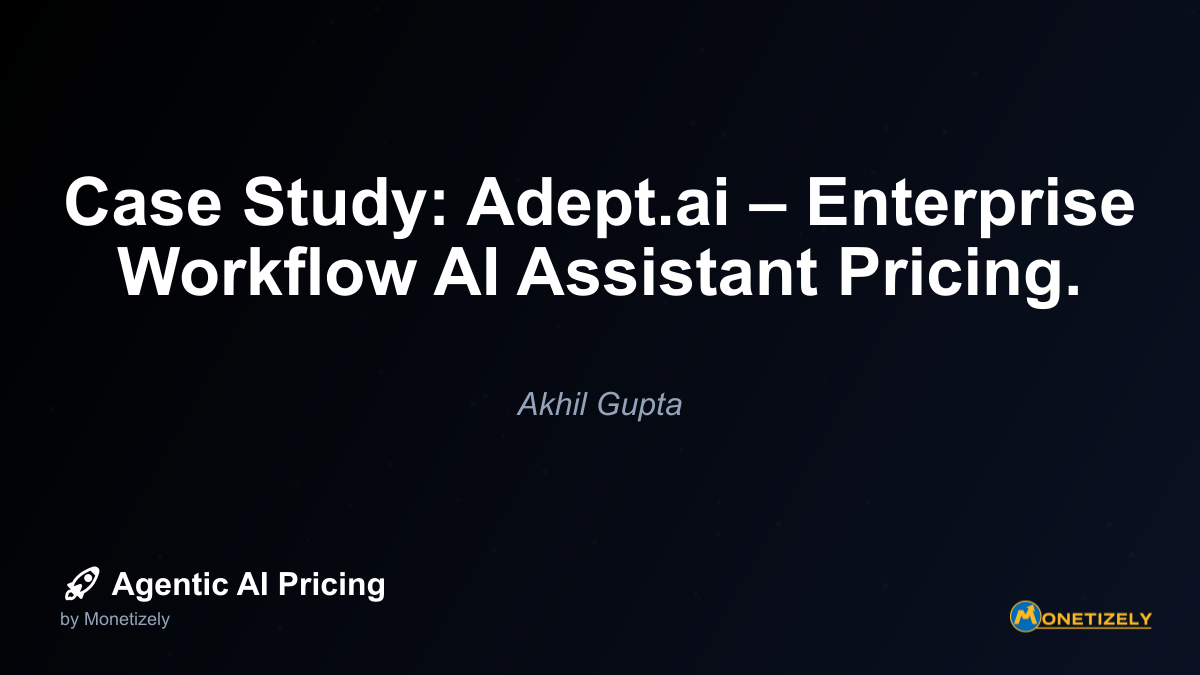· Ajit Ghuman · Case Studies · 8 min read
Case Study: HubSpot ChatSpot – Freemium AI Adoption Strategy.
AI and SaaS Pricing Masterclass
Learn the art of strategic pricing directly from industry experts. Our comprehensive course provides frameworks and methodologies for optimizing your pricing strategy in the evolving AI landscape. Earn a professional certification that can be imported directly to your LinkedIn profile.

User Experience and Value Proposition
ChatSpot’s core value proposition centers on three key benefits:
Accessibility for Non-Technical Users
Traditional CRM systems often require specialized knowledge and training. ChatSpot democratizes access by allowing anyone who can type a question to interact with complex CRM data. This accessibility is particularly valuable for:
- Sales representatives who need quick customer information during calls
- Executives seeking high-level insights without navigating dashboards
- New employees who haven’t yet mastered the CRM interface
- Cross-functional team members who use CRM data occasionally
Efficiency and Time Savings
The conversational interface dramatically reduces the time required for common CRM tasks. Users report significant efficiency gains, particularly for:
- Creating and updating records
- Generating performance reports
- Finding specific customer information
- Summarizing account activity
- Extracting actionable insights from data
Enhanced Data Utilization
Many organizations collect vast amounts of CRM data but struggle to extract meaningful insights. ChatSpot helps bridge this gap by making complex queries accessible through natural language. Users can ask questions like “Which deals are most likely to close this quarter?” or “What’s the common thread among our churned customers from last month?” without building custom reports.
The Economics of HubSpot’s Freemium AI Strategy
While offering ChatSpot for free might seem counterintuitive from a revenue perspective, the economics reveal a sophisticated long-term strategy.
Investment vs. Return Calculation
HubSpot’s investment in ChatSpot includes:
- Development costs for the AI technology
- Infrastructure costs for processing natural language queries
- API costs for language model access (if using third-party models)
- Ongoing maintenance and improvement expenses
Against these costs, HubSpot weighs returns including:
- Increased user retention (reduced churn)
- Higher platform engagement
- Competitive differentiation
- Future monetization potential
- Enhanced brand perception
Customer Lifetime Value Impact
The most significant economic justification for free AI features comes from their impact on customer lifetime value (CLV). By increasing retention and potentially driving users toward higher subscription tiers, ChatSpot can substantially increase CLV even without direct monetization.
For example, if ChatSpot reduces annual churn by just 2 percentage points for a customer paying $10,000 annually, the lifetime value increase far exceeds any direct revenue that might have been generated by charging for the feature.
Future Monetization Pathways
While initially free, ChatSpot establishes several potential monetization pathways:
Tiered Access Model: As the product matures, HubSpot could restrict certain advanced AI capabilities to higher subscription tiers.
Usage-Based Pricing: Implementing charges for usage beyond basic limits (queries per day, data processed, etc.).
Premium AI Features: Developing specialized AI capabilities (advanced forecasting, custom model training) as paid add-ons.
Enterprise-Specific Capabilities: Creating AI features specifically designed for enterprise needs, such as custom language model training on company-specific data.
Lessons for AI Implementation in SaaS
HubSpot’s approach with ChatSpot offers valuable lessons for other SaaS companies implementing AI features:
1. Prioritize Adoption Over Immediate Revenue
For AI features, wide adoption often creates more long-term value than immediate monetization. The network effects and data advantages of broad usage frequently outweigh short-term revenue potential.
2. Use Freemium to Identify Value
Free access provides real-world data on how users actually value AI features, which is far more reliable than speculative pricing. This data becomes invaluable for designing eventual monetization strategies.
As one product manager noted: “We thought users would value our AI for complex analytics, but usage data showed they primarily valued simple task automation. This completely changed our monetization approach.”
3. Design with Future Monetization in Mind
Even when offering AI features for free, product architecture should anticipate future monetization. This means building with:
- Clear usage tracking
- Tiering capabilities
- Performance metrics
- Value quantification
4. Focus on Workflow Integration
Standalone AI tools rarely achieve broad adoption. HubSpot’s success with ChatSpot stems partly from its seamless integration into existing workflows rather than requiring users to adopt entirely new processes.
Market Response and Competitive Reaction
The market response to ChatSpot has been predominantly positive, with users particularly praising:
- The intuitive interface
- Time savings for routine tasks
- Accessibility for non-technical team members
- The ability to extract insights from CRM data more easily
Competitors have responded with varying approaches:
- Salesforce accelerated the rollout of its Einstein AI capabilities
- Zoho introduced conversational AI features to its CRM
- Microsoft enhanced Dynamics 365’s AI capabilities
- Several smaller CRM providers partnered with AI companies to quickly add similar functionality
This competitive response validates HubSpot’s strategy, demonstrating that conversational AI is rapidly becoming table stakes in the CRM industry rather than a premium differentiator.
Long-Term Strategic Implications
Looking beyond immediate market dynamics, HubSpot’s approach with ChatSpot reveals several long-term strategic implications:
AI as Infrastructure, Not Feature
HubSpot’s integration of ChatSpot throughout its platform signals a future where AI is treated as fundamental infrastructure rather than a discrete feature. This approach anticipates a market evolution where AI capabilities become expected components of all business software rather than premium add-ons.
The Data Advantage Moat
By rapidly deploying AI across its user base, HubSpot is building a data advantage that becomes increasingly difficult for competitors to overcome. Each user interaction improves the system, creating a virtuous cycle that strengthens HubSpot’s competitive position over time.
Shifting Value Perception
The freemium approach helps shift market perception about where value resides in CRM systems. Rather than positioning AI as the value driver, HubSpot implicitly suggests that AI is simply an enabler that helps users access the true value: their own customer data and relationships.
Challenges and Risks
Despite its strategic elegance, HubSpot’s approach with ChatSpot is not without challenges and risks:
Monetization Timing
Determining the right moment to begin monetizing AI features presents a delicate balance. Move too quickly, and HubSpot risks user backlash; wait too long, and the company might struggle to shift user expectations from free to paid.
Capability Expectations
Free AI features create expectations about capability growth. Users who become accustomed to receiving AI improvements at no cost may resist future attempts to charge for more advanced capabilities.
Cost Management
As usage scales, the computational costs of providing AI capabilities to all users could become significant. HubSpot must carefully manage these costs while maintaining performance and user experience.
Competitive Commoditization
If all major CRM providers offer similar AI capabilities, the competitive advantage diminishes. HubSpot must continue innovating to stay ahead of this potential commoditization.
Future Evolution Scenarios
Based on current trends and strategic positioning, several potential evolution paths exist for ChatSpot:
Scenario 1: Gradual Tier Migration
In this most likely scenario, HubSpot gradually migrates advanced ChatSpot capabilities to higher subscription tiers while maintaining basic functionality for all users. This approach preserves the adoption advantages while creating upsell opportunities.
Scenario 2: Usage-Based Premium Features
HubSpot could maintain free access but implement usage-based charges for high-volume users or specialized capabilities. This approach balances accessibility with revenue generation from power users who derive the most value.
Scenario 3: Enterprise-Focused Customization
A third approach would maintain free general AI capabilities while developing premium, customizable AI features specifically for enterprise customers. This strategy leverages the willingness of larger organizations to pay for tailored solutions.
Implementation Recommendations for SaaS Companies
For SaaS companies looking to implement AI features, HubSpot’s approach with ChatSpot suggests several best practices:
1. Start with High-Impact, Low-Complexity Features
Begin by implementing AI features that deliver immediate value with minimal user learning. Success with simple features builds trust for more complex capabilities later.
2. Measure Value Creation, Not Just Usage
Develop metrics that capture actual value creation (time saved, improved outcomes) rather than just feature usage. These metrics will prove invaluable for future monetization decisions.
3. Design Clear Upgrade Paths
Even when offering free AI capabilities, design with clear upgrade paths in mind. Users should see a natural progression from free features to more powerful paid capabilities.
4. Invest in User Education
AI features often require users to think differently about their work. Invest in education that helps users understand not just how to use AI tools but how to reimagine their workflows to maximize value.
5. Balance Automation and Augmentation
The most successful AI implementations balance automation (doing tasks for users) with augmentation (helping users do tasks better). This balance maintains user agency while delivering efficiency gains.
Conclusion: The Strategic Patience of Freemium AI
HubSpot’s approach with ChatSpot exemplifies a sophisticated understanding of how AI features differ from traditional software capabilities. By prioritizing adoption over immediate monetization, HubSpot is building a foundation for long-term competitive advantage rather than short-term revenue gains.
This strategy recognizes that AI’s value in business software comes primarily from its integration into workflows and its ability to make existing data more accessible and actionable. By removing price barriers to this integration, HubSpot accelerates the value creation process for its users while strengthening its market position.
For SaaS companies implementing AI capabilities, HubSpot’s example suggests that strategic patience may yield greater long-term returns than premature monetization. The true value of AI often emerges through usage patterns that can’t be fully anticipated in advance, making broad deployment and careful observation more valuable than early revenue optimization.
As the AI landscape continues to evolve, the companies that succeed will likely be those that, like HubSpot, view AI features through a strategic lens that balances immediate business needs with long-term ecosystem development.
For a deeper understanding of AI pricing strategies across different business contexts, check out our detailed analysis on HubSpot’s AI Agent Integration costs and pricing structure.
Co-Founder & CEO
Ajit is the author of Price To Scale, a top book on SaaS Pricing and is the Founder of Monetizely. Ajit has led and worked in pricing and product marketing at firms like Twilio, Narvar and Medallia. His work has been featured in Forbes and VentureBeat. Ajit regularly consults with software companies from Seed stage to post-IPO on pricing strategy. Ajit is also a highly-rated co-instructor for 'The Art of SaaS Pricing and Monetization' on Maven.
Pricing Strategy Audit
Let our experts analyze your current pricing strategy and identify opportunities for improvement. Our data-driven assessment will help you unlock untapped revenue potential and optimize your AI pricing approach.




